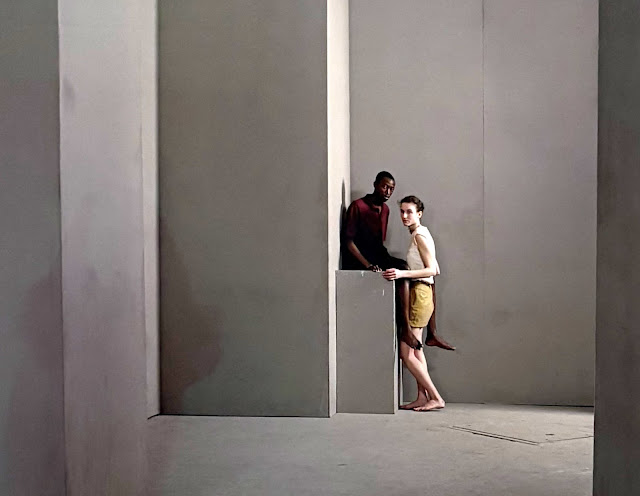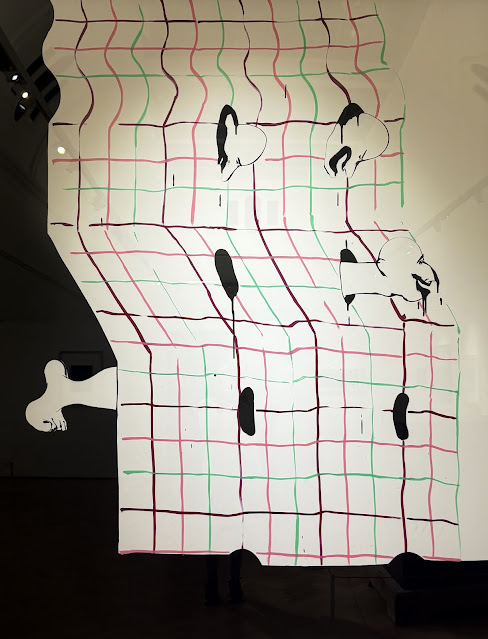Contemporary Art - Bristol Museum and Art Gallery

Some of the 20th century exhibits in the museum's permanent collection. The curators remind us, how, in the 20th century, art stopped being in the service of religion, morality, ideology or even realism, and art carved a space for itself. The 20th century was a period of revolutions in art that includes paintings of everyday life, Abstraction, art that questions art, art as social commentary, photography, video, the use of ordinary materials and feminism. Thus, art became free to define its own boundaries.
Sarah Dobai, Emily and Emmanuel, (C-type photograph)
I loved this photograph and I am very sorry I got all these reflections on it. I tried various ways of taking the photograph and all I achieved was getting reflections from different art works.
'My pictures are painted to be listened to'
Warnford Water is an example of a panoramic abstract landscape format that Hichens pioneered, reminiscent of the immersive effect of Monet's multiple Waterlily paintings installed wall to wall in the Musee de L'Orangerie in Paris.
Lynn Chadwick, Idioorphic Beast, 1953, (iron)
The critic Herbert Read saw the alien sculptural forms of Lynn Chadwick as a reaction to the horrors that had been revealed in the death camps of WWII.
In 1959, Lanyon took up gliding to 'get a more complete knowledge of the landscape'. The Cubist forms of his ealry work gave way to the freer gestures and frenetic circling of High Moor, which place the viewer amongst the wind and sea. He nevertheless claimed to artist Alan Davie that he 'always had a clear image in my mind before starting a painting'.
Ai Weiwei, A Ton of Tea, 2007, (compressed Pu Erh tea)
A Ton of Tea brings together many of Weiwei's interests in a post-Minimal and richly scented giant cube of tea. The apparent simplicity of form and material makes reference to post-war art history and globalisation, through the humble substance of tea, China's oldest export.
A Ton of Tea brings together many of Weiwei's interests in a post-Minimal and richly scented giant cube of tea. The apparent simplicity of form and material makes reference to post-war art history and globalisation, through the humble substance of tea, China's oldest export.
'I have a strong preference for primitive and elementary forms'.
Tala Madani moved to America from Itan when she was 13 and has said that her difficulty learning English attracted her to art. The way Madani combines the language of Abstraction with the figurative shares something with Roger Hilton's quest to 'reinvent figuration'.
The man reading his Instruction Manual merges with the manual in a play on 'man' and 'manual' that seems to mock masculine attachment to rulebooks.
Madani's titles are directly descriptive and yet the subjects remain elusive. These are paintings full of linguistic and visual puns. But the emphasis is on painting, with all the characteristics of expressive painting: sensual, fresh and bold. Double Head Index shows two headless figures, revealed in their mirrored reflections to be attached to the one body, as one man attempts to become the larger personality of the other.


















No comments:
Post a Comment